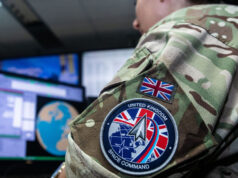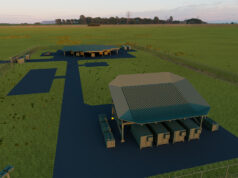The first offensive weapon system in the United States Space Force, the Counter Communications System Block 10.2, achieved Initial Operating Capability on the 9th of March.
The Counter Communications System, first introduced in 2004, is a transportable space electronic warfare system that reversibly denies adversary satellite communications developed in partnership with L3Harris.Col. Stephen Purdy, SMC Special Programs director, said the benefits of CCS to deployed forces and warfighters cannot be overstated.
“CCS B10.2 represents the end of the traditional way of development,” Purdy said in a release.
“Future upgrades and enhancements will make use of SMC’s Agile DevSecOps (Development, Security and Operations) approach adapting to the evolving battlefield while delivering capabilities to the warfighter faster and better than our opponents.”
US Air National Guard units in California, Colorado and Florida and Air Force active duty units like the 4th Space Control Squadron at Peterson Air Force Base, will use the CCS.
“The advantage of the National Guard’s unique relationship of citizen-Airmen working full-time in industry with mission partners like L3Harris, allows us to create a continuous feedback loop between system operators and contractors providing the best counter communications system,” said Lt. Col. Warren Riner, Pentagon division chief, National Guard Bureau-space operations.
“We look forward to continued success operationally with the new weapon system, and working with SMC and industry partners to support the United States Space Force.”












“reversibly denies…” Is it me, or is that gobbledygook? Anyone know what it means?
A lot of defence companies can’t write in plain english. They mean when it is switched on it jams the satellite and when it is switched off the satellite can communicate again.
Thanks Mark. Does it have back-pedalling mudguards?
What do people mean by “space warfare”? What are the mechanics of such a conflict? What constitutes a “battle”?
This might be helpful:
https://www.thedrive.com/the-war-zone/32570/space-force-just-received-its-first-new-offensive-weapon
Kinda sounds like they mean conventional warfare that has an element of satellite involvement. Glamours name for something that is basically electronic warfare.
It covers a multitude of different ways of disrupting or destroying your opponents means of communications, navigation and reconnaissance. The US, Russia, China and now India all have the capability of destroy satellites in low earth orbit. Both Russia and the US can take out much high satellites, the Chinese are clearly working on that too with their multistage modification with the DF-21. Both Russia and the US have laser dazzlers that can blind or permanently damage a reconnaissance satellite. In the last two years it has emerged at how successful Russia has become at jamming and spoofing GPS navigation.
In future wars, the country that controls the space environment will have a significant advantage over their opponent. But it will also come down to who can replace the lost capability the quickest. Aircraft such as the Zephyr will be a godsend in such events, but only when used as a communications relay. The high altitude airships may be better placed as quasi satellite replacements. But it will probably be the use of cubesat swarms that make the biggest impact for not only defence but also for the speed of launching replacements. Cubesats are generally about a foot square, which doesn’t sound a lot when compared to the larger military satellites. But they can be configured for single roles comparable to the larger satellites. When launched in a swarm will also have comparable capabilities.
I’ve suggested to my son, who is a currently serving USAF officer, to move over to this new service. In 20 years it will own the Air Force vs the other way around.
Cheers